(5078 products available)
































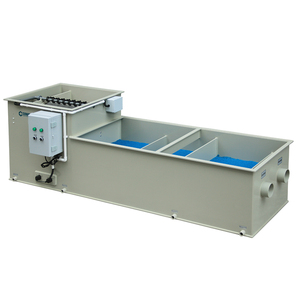
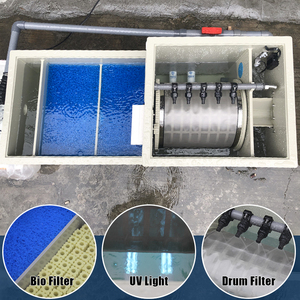





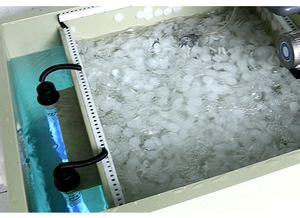
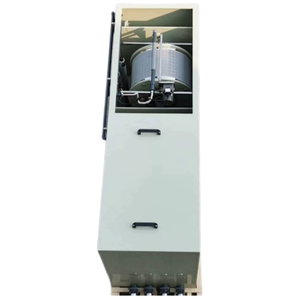



















































































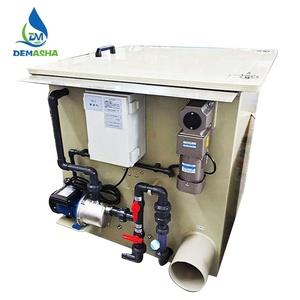

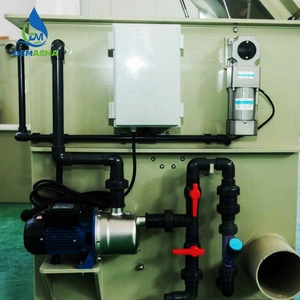





































































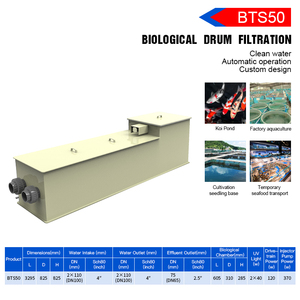
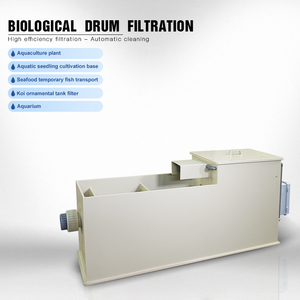













A koi filter is a water treatment system designed to purify the water in a koi pond, ensuring a healthy environment for the fish. There are several types of koi filters, each with distinct advantages and features:
Mechanical Filters:
This type of koi filter removes physical debris from the water. It usually has a sponge or mesh that collects dirt particles, including fish waste, dead leaves, and uneaten food. The water passes through the mesh or sponge, and everything that is not water itself sticks to the filter material. Mechanical filters are essential for keeping koi water clean and clear and are often used with other filters that remove tiny dissolved things to give a complete cleaning system.
Biological Filters:
These filters use beneficial bacteria to break down fish waste and other organic matter. They have filter media that provides a large surface area for these bacteria to grow on. The bacteria are vital for converting harmful ammonia and nitrites from fish waste into less harmful nitrates that are safer for koi. Biological filters help maintain healthy water quality by processing fish waste naturally using bacteria. Together with mechanical filters that remove visible dirt, biological filters are important for cleaning koi ponds.
Pressure Filters:
These filters can be used for both mechanical and biological filtration. They operate on the principle of creating pressure within the filter unit to push water through the filter media. This type of koi pond filter is suitable for ponds of all sizes and can be placed above or below ground. Pressure filters have the added benefit of being able to clean themselves automatically in some models. They are effective at removing dirt, debris, and contaminants from koi pond water, helping to maintain a clean and healthy environment for the fish.
Gravity Filters:
As the name implies, these filters rely on gravity for their operation. In a gravity filter, water is drawn into the filter unit by gravity and then passed through the various filter media layers. This type of koi pond filter can be placed at pond level or below. They are easy to clean and maintain and are ideal for larger ponds. Gravity filters are efficient at removing both large particles and fine debris from the pond water, providing mechanical and biological filtration.
UV Sterilizer Filters:
Ultraviolet (UV) sterilizer filters combine filtration with UV sterilization to eliminate harmful microorganisms in the water. The UV light kills algae, bacteria, viruses, and parasites, helping prevent diseases in koi fish. This type of filter is especially useful for controlling algae blooms and improving water quality. UV sterilizer filters are usually installed after the pump so that water is sterilized before being returned to the pond. They are effective at keeping koi ponds healthy by destroying disease-causing germs without adding any chemicals.
Koi fish filters come in different sizes and designs to meet the varying needs of different ponds. Some of these koi pond water filters are briefly described below.
Pressurized filter design
These koi filters are usually round or cylindrical in shape. They have a strong outer casing that can withstand high pressure. Inside the filter, there are various filtering materials arranged in different layers. When the pump is working, water flows into the filter through the inlet pipe. The water then passes through the filtering materials and comes out clean through the outlet pipe. Because the water is under pressure inside the filter, it can be sent back to the pond through a higher outlet. The water is filtered even when the filter is buried underground due to the pressure.
Gravity-fed filter design
These koi filters usually have a rectangular or box-like shape. They are bigger and heavier than the pressurized filters because they hold more water and filtering materials. The filter works based on the force of gravity. Water flows into the filter through the top, and then it is pulled down by gravity through the filtering materials to the bottom of the filter. Clean water collects at the bottom and is sent back to the pond through an outlet pipe. The filter is usually placed above the pond level, and water flows into it by itself without using a water pump. The dirty water is pulled down by gravity, and clean water comes out at the bottom.
UV sterilizer filter design
These koi filters are usually cylindrical or vertical in shape. They have a strong outer casing that can withstand high pressure. Inside the filter, there are ultraviolet (UV) sterilization lamps that kill harmful bacteria, parasites, and algae in the water. When water flows into the filter, it passes through the UV sterilization lamps, and the UV light kills the microscopic organisms in the water. The killed organisms are then trapped by the other filtering materials. The UV sterilizer filter cleans the water and also helps to keep the pond algae-free.
There are different designs of koi filters to suit the needs of different koi pond owners. The pressurized filter is good for ponds that need a filter that is buried underground. The gravity-fed filter is ideal for big ponds that need a filter that is placed above the pond level. The UV sterilizer filter is suitable for ponds that need to kill harmful microscopic organisms in the water.
Keep Koi Fish in the Backyard
Backyard koi ponds are part of the backyard landscape and keep the koi fish the homeowner wants. The koi filter is the main part of the filtration system that keeps the water clean so the koi can live there for a long time. It filters out dirt and fish waste that pollutes the water, gives the good bacteria that break down fish waste a place to stay, and keeps the water oxygenated so the koi can breathe.
Run a Koi Fish Farm
A koi fish farm needs many koi filters because the farm's goal is to breed and raise koi fish of different sizes and health qualities. These filters keep the water clean and healthy for all the koi in the farm ponds. Some farms even use large-scale biofilter systems that can filter the water for many large ponds at once.
Enter Koi Fish Competitions
Koi fish kept for competition need high-quality water that is constantly filtered by a good koi filter. The clean water helps the koi stay healthy and develop their colors and patterns well. Koi breeders who enter competitions use filters that do more than just clean the water; they also help bring out the koi's shine and help their bodies grow large and beautiful.
Design an Aesthetic Pond with Natural Filtration
Some koi pond makers use koi filters that look like natural ponds. They add filters that are made to look like rocks or plants. These filters clean the water while making the pond look nice. They are good for ponds where people do not want machines to be seen.
Provide a Temporary Home for Koi During Renovation
If a koi pond needs work, the koi may need to move to a new place for a while. The new place could be a large tank or a portable pond. A koi filter is needed here to keep the water clean in the temporary home. The filter will help keep the koi safe until the pond is ready for them again.
Keep Water Quality for Koi with Different Size Requirements
Koi fish grow big and need different sizes of ponds over time. Small koi need filters that can handle small ponds, and as the koi grow, the filter has to handle a bigger pond size. This means the filter must work well no matter if the pond is small or large for the koi's size.
When choosing a Koi pond filter, consider the pond size, filter type, flow rate, and maintenance. These factors ensure the filter keeps the pond water clean and healthy for Koi fish.
Pond Size
The size of the pond is a critical parameter to consider when choosing a Koi filter. Koi fish grow large, and they require a lot of space to live healthily. A larger pond will require a filter with a greater capacity to keep the water clean. If the pond size is too big for the filter capacity, it will be hard to maintain water quality. On the other hand, a small pond will suit a filter with less capacity better. So, when choosing a Koi filter, it's important to consider the pond size and ensure the filter can handle the capacity.
Filter Type
There are several Koi pond filter types, such as mechanical, biological, UV, and pressure filters. Each type has advantages and disadvantages, and the one that will work well for the pond will depend on its specific needs. For example, a mechanical filter may be suitable for a pond with many Koi fish, while a biological filter may be better for a pond with fewer fish.
Flow Rate
The flow rate is how fast the filter can process pond water, usually measured in gallons per hour (GPH). For Koi pond filters, the flow rate should be at least half of the pond volume in GPH. For example, a 1,000-gallon pond should have a 1,000-GPH filter. The flow rate is important because it determines how quickly the filter can clean the pond water. If the flow rate is too low for the pond size, it will take a long time to clean the water, which is not good for the fish. So, when choosing a Koi filter, it's important to consider the flow rate and ensure it is high enough for the pond size.
Maintenance
Some filters are easy to maintain, while others require a lot of work. It's important to consider how often the filter needs to be cleaned, how easy it is to replace the filter media, and whether any other maintenance is required. If the filter is too much work to maintain, it may be neglected, leading to poor water quality and unhealthy Koi fish.
Q1: How often should the filter be changed?
A1: The koi pond filter needs to be cleaned every 1-2 weeks during the active season of koi.
Q2: What is the lifespan of a koi filtration system?
A2: Koi filter systems can last for decades if they are properly maintained.
Q3: What is the difference between a pressurized and a gravity-fed filter?
A3: A pressurized filter pushes water through the system using pressure and a pump; a gravity-fed filter relies on the natural pull of gravity to circulate water.
Q4: Can a koi filter be too fine?
A4: Yes, if a filter is too fine, it may remove too many suspended solids and harm beneficial bacteria.
Q5: How can users tell if their koi pond filter is working properly?
A5: Users can check the flow rate, look for clean water, and monitor ammonia and nitrate levels to ensure their koi pond filters are working well.